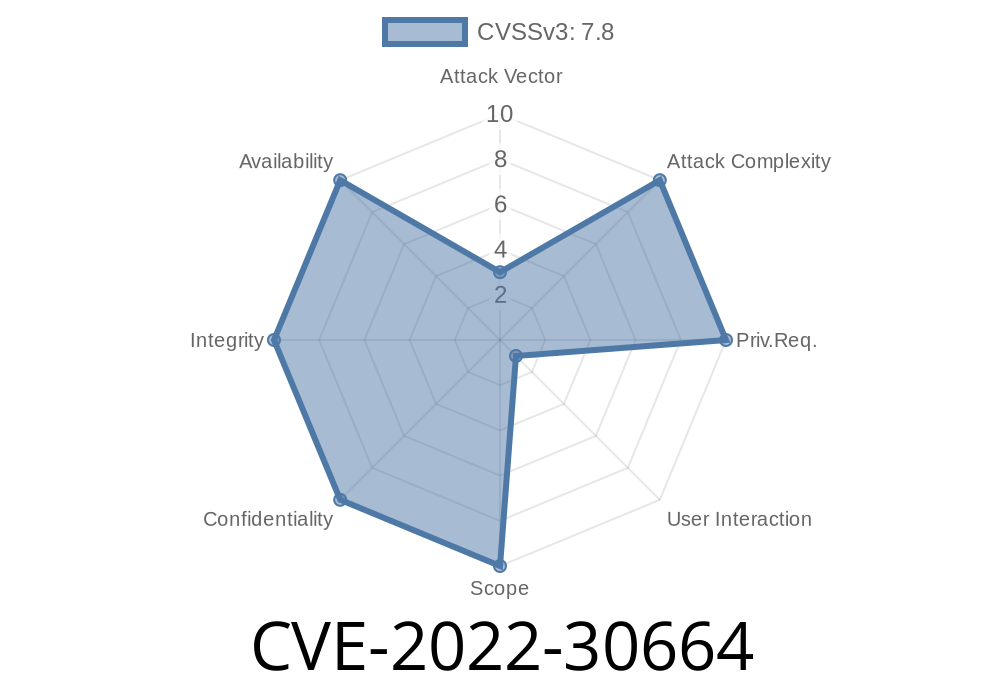Summary: Adobe Animate has a serious flaw in version 22..5 (and earlier) that can be exploited by hackers to run arbitrary code on your computer. In this post, we'll delve into the details of the security hole and provide references to the original sources, along with code examples to help visualize how this issue can be taken advantage of.
Background: What is Adobe Animate?
Adobe Animate is a popular multimedia authoring and computer animation software developed by Adobe Inc., formerly known as Macromedia Flash and Adobe Flash Professional. With this software, web developers and animators can create interactive and animated content for websites, games, and more. Users of Adobe Animate should take note of a critical vulnerability reported in this software and ensure they've patched their systems to minimize the risk of exploitation.
The Vulnerability: CVE-2022-30664
This particular vulnerability is designated with the Common Vulnerabilities and Exposures (CVE) identifier CVE-2022-30664. It affects Adobe Animate version 22..5 and earlier, and is classified as an out-of-bounds write vulnerability that potentially allows for arbitrary code execution.
What is an Out-of-bounds Write Vulnerability?
An out-of-bounds write vulnerability occurs when a program writes data to a memory buffer, but the data's size exceeds the intended boundary of the buffer. This can lead to the corruption of nearby memory locations and, in some cases, provide an attacker with the ability to execute arbitrary code in the context of the current user.
Exploitation: Loading a Malicious File
For this vulnerability to be exploited, a victim must open a malicious file using Adobe Animate. The attacker crafts the file in such a way that it takes advantage of the out-of-bounds write vulnerability, causing the program to perform actions that the attacker specifies, which could include running arbitrary code.
Code Snippet Example
To help understand how this vulnerability could be exploited, let's examine a simple example of a vulnerable function within Adobe Animate:
void vulnerable_function(char* data, size_t data_length) {
char buffer[1024];
// This line causes the out-of-bounds write vulnerability.
memcpy(buffer, data, data_length);
// ...
}
In this example, the memcpy() function copies data into the buffer, but fails to check that data_length is within the bounds of buffer. An attacker could influence the contents and length of data through the maliciously crafted file opened in Adobe Animate, potentially leading to arbitrary code execution.
References and Further Reading
Adobe has acknowledged this vulnerability and provided patches for the affected versions of Adobe Animate software. The official security bulletin can be found here:
- Adobe Security Bulletin APSB22-25
You can also view the CVE entry for this vulnerability
Conclusions and Recommendations
To protect against this critical vulnerability, Adobe Animate users should ensure they update their software to the latest version. Adobe has released patches addressing this issue, which can be found in the Security Bulletin linked above.
Additionally, users should practice vigilance and avoid opening files from unknown or untrusted sources. This can significantly reduce the threat of attackers exploiting CVE-2022-30664 or any other software vulnerabilities that could lead to arbitrary code execution on a victim's computer.
Timeline
Published on: 06/16/2022 18:15:00 UTC
Last modified on: 06/27/2022 18:39:00 UTC
